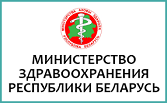Problems of diagnosis of breast diseases
Any civilization can be judged by its relation to a woman. The role of women in society is multifaceted. It is undeniable that a woman not only brings happiness and joy, but also creates coziness and preserves peace in every home. Women's health is the health of the nation. The state's concern for the health of women manifests a level of development and culture.
Breast cancer is one of the first places in the structure of morbidity and mortality from malignant neoplasms in women. Every ninth woman in the course of her life develops breast cancer.
Over the past 20 years, the incidence of breast cancer has increased by 64%. In the Gomel region, there are 5,200 women cured for breast cancer. Annually in Gomel and Gomel region, an average of 500 new cases of breast cancer in women are detected.
Identification and timely treatment of pathological changes preceding the development of neoplasms in the mammary glands and early diagnosis of malignant tumors in the initial stages of development make it possible to carry out prevention and treatment without the use of crippling methods and achieve full recovery. The mammologic service can not bring the desired results without understanding women's need for timely systematic examination and active attitude to their health.
The mammary gland is an organ whose function is regulated by the endocrine system, which implies the presence of cyclic changes during the period of normal menstrual function. A slight increase in the volume of the mammary glands and their "engorgement" that occurs before menstruation and passes with its onset is a consequence of normal cyclic changes. The appearance of severe pain or a feeling of "raspiraniya" in the mammary glands and a significant increase in their volume, which occurs a few days before the onset of menstruation, is called the syndrome of "premenstrual tension" of the mammary glands. Changes in the mammary glands during pregnancy and lactation: an increase in volume, the appearance of hyperpigmentation, the severity of the vascular pattern are physiological, i.e. Normal for this situation.
In the problem of diagnosing breast cancer, two important aspects should be highlighted.
- First, the earliest manifestations of breast cancer (non-palpable malignant tumors) can be recognized only in mammography (X-ray of the breast). The mammography is performed by women over 40 years old on the recommendation of a doctor. To teenagers, pregnant and lactating women, mammography is prescribed only on strict indications. The level of radiation exposure of such an investigation is small and does not pose a threat to the health of women.
- Secondly, with the development of self-examination techniques, women can identify breast cancer at an early stage, when full recovery is possible.
The risk factors for breast cancer include: heredity (the presence of benign and malignant breast tumors in blood relatives on the maternal line); Early appearance of menstruation (up to 12 years) and later onset of menopause (after 55 years); infertility; Frequent termination of pregnancy; Refusal of lactation; Chronic gynecological diseases; Diseases of the endocrine glands; Exposure to ionizing radiation and carcinogens. The presence of cancer in one gland increases its occurrence in the second.
The mammary gland is subject to cyclic changes. The most informative period for the survey is from 6 to 12 days from the beginning of menstruation.
In addition to regular cyclic changes, the breast tissue undergoes changes throughout the life of a woman: from development and maturation to complete resorption (involution), which affects its density and influences the choice of the method of examination in each specific period.
In nulliparous women under 35 years of age, breast tissue is characterized by high density, poorly transmitted X-rays, so mammography is not very informative. At this stage, ultrasound is the main method. With age, after giving birth and breast-feeding, the density of the tissue decreases, which makes it possible to obtain an x-ray image of the gland, so the mammography study comes to the fore.
Cytological examination of breast tissue cells obtained with puncture, and smears of secretions from the ducts allows us to clarify the nature of the disease.
Complete removal of the altered tissue site - sectoral resection with morphological examination - is both a method of diagnosis and surgical treatment.
If there are any symptoms on the part of the mammary glands, any seal and discharge from the nipples should be consulted by the gynecologist in the polyclinic at the place of residence, which will give recommendations for the prevention and treatment of the revealed pathology, or send it to a specialized institution for refining diagnosis. Each woman should apply once a year to the territorial polyclinic for examination of the mammary glands, even in the absence of complaints and symptoms.
Health is the main personal value of a person, care for its preservation must be carried out by every person throughout his life.



















